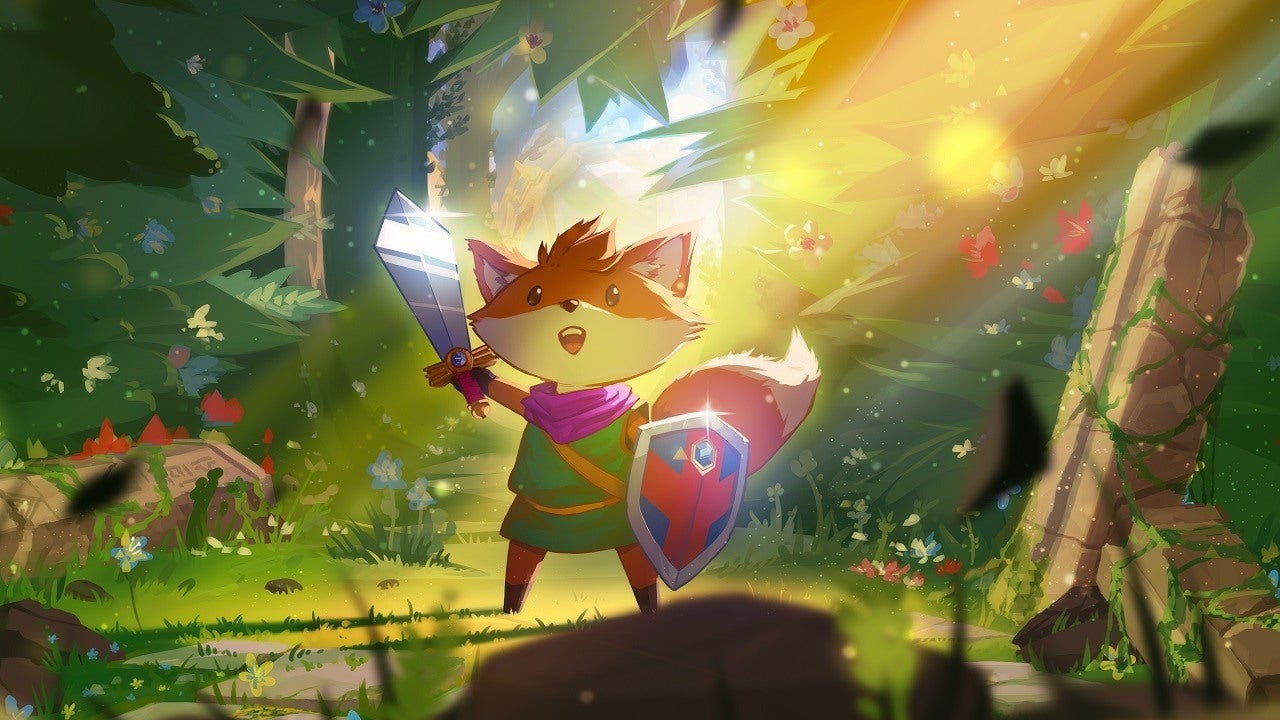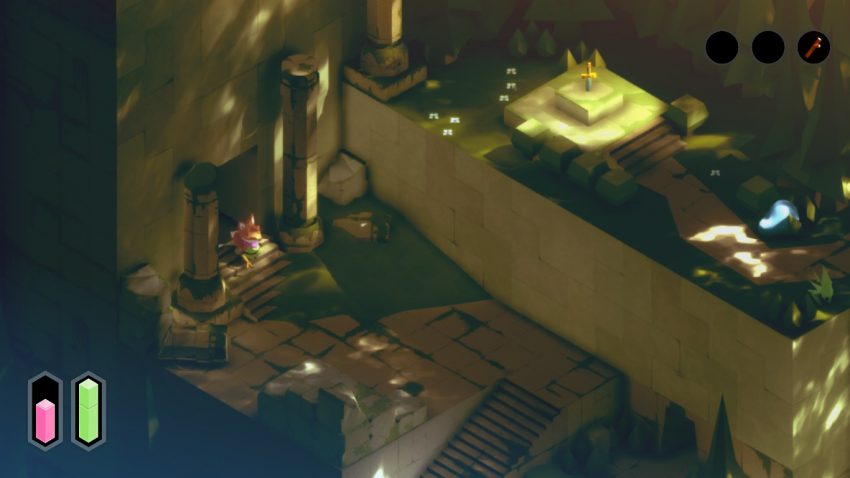Inspired By Zelda: Trotting Through the Demo of TUNIC
Posted on August 30 2020 by Charles Xavier

For a limited time this weekend, the Indie game TUNIC has a downloadable demo available on Steam and will be present on the Gamescom Indie Arena Booth that is currently underway. When I got whiff of this news via our managing editor Rod Lloyd, I downloaded the game as soon as it was available and dove into it – I’m happy to report I wasn’t disappointed.
This demo isn’t really new; it’s the same demo that has been playable at E3 since 2018, albeit improved since its first release. As developer Andrew Shouldice notes, “It’s more or less the same demo we’ve been showing for a while now, so when I look at it, all I see are the bugs I’ve fixed, the old systems I’ve revamped, and the details I’ve improved.”
Published by Finji, TUNIC is an Xbox and PC exclusive that is still in development, but it shows a lot of promise. As the game’s Steam description says, “TUNIC is an action/adventure about a tiny fox in a big world.” You’ll play as a Fox protagonist that wears a tunic, and while exploring you’ll find secrets to help you progress through the world.
A Visually Stunning Demo

Overall, the demo has about 15 to 20 minutes worth of content, if one is thorough in their exploration. The game begins with the Fox waking up alongside a beach, with only a few places to go from there. As I followed the path inland, I stumbled upon a cave with the first item of the game: a stick! Naturally, this is your earliest means to perform combat; it doesn’t inflict much damage, but it’s better than nothing.
From here, I started checking out the overworld, taking note of how great the game looks visually. TUNIC has remarkable dynamic lighting, and, with its tilt-shifted point of view and remarkable architecture, the game has a really unique atmosphere that I enjoyed. It also has serene and mysterious music that fits the world well, composed by Lifeformed, known for their work on Dustforce.
There were a few pathways that seemed to be blocked, such as a locked door that I unfortunately never found a key for. Along the way, I came across the first enemies of the game, blob creatures that hop around. These foes serve to teach the basic routine of combat, which is slash, roll away, rinse, and repeat. Enemies can be targeted too, which changes the camera to a more overhead point of view, as well as displays the targeted enemy’s health meter. After a few whacks from the stick, these baddies were easily disposed.
Nearby, there was also a save statue. Saving in TUNIC triggers a sunset scene, a brief night animation, and then a sunrise; besides saving one’s progress, the process also replenishes one’s health. The only downside is that any enemies the player previously defeated respawn. And since this is a demo, one can’t quit the game and pick back up at any save point.
The demo funnels players to the first dungeon: The Fortress (it actually says it is Level 3). In one of the dungeon’s first rooms, it’s hard to miss a sword and pedestal resting on the second level. But how does one get there? Following a path down to a lower level, I came to a crossroads with signposts that can be read. While the text displayed on such signs is an unknown language, there are usually images conveying something important to make the text somewhat decipherable. For example, the signpost pointing towards the path with the pedestal depicts a sword. That sign points north, so up we go!
There was a new enemy type along the path to the sword, a caterpillar-like creature that shoots projectiles. Eventually I reached the sword and backtracked to the crossroads for an “Aha” moment; the sword can knock away the rocks that were blocking pathways out in the overworld.

After a little more backtracking, I was able to knock away the rocks outside. The only noteworthy find was a piggy bank in a chest; selecting it from your inventory gives the player the cash that was inside it and makes the item disappear. The sword opened up a few more paths in the overworld, but these areas led to roadblocks that have no means to be unblocked in the demo. I guess we’ll have to wait for the full game! There was also one pathway that was home to really high-level stone enemies that shoot lasers. They were cool to see, but a fight with them would have probably taken away any chance to get to the dungeon boss in a single playthrough of the demo.
Deeper into the dungeon, I came across the shield, which is a game changer. With this tool, you can block enemy attacks and capitalize on brief openings to attack them. Performing this action does cost stamina, and the shield has a durability meter. From here, I encountered a few more new enemies: a spider that has a dashing attack, and some goblin-like creatures that have swords. There was a particular group of the goblin creatures blocking the door to the boss battle that were quite challenging, and I ended up having to use one of my potions while fighting them, leaving me in rough shape for what was in store.

Emerging from the dungeon into an outside area gave me a false sense of relief. This area is actually the battleground for the slumbering boss which the Fox’s presence wakes. It’s a towering foe, seemingly made of the same stone as the surrounding structure; it has multi-colored electronic eyes (which at first made me think it was a robot) and wields a huge sword. I’d love to say that I beat this boss on my first try, but in truth I didn’t. I got pretty close at least! On a second attempt, I vanquished him to get my sweet revenge. No matter if a player beats the boss or dies to it, this is the end of the demo.
A Promising Game Worth Keeping an Eye on

Overall, the demo was really enjoyable, and I was sad that it ended so soon. I have no major complaints with TUNIC thus far, just a few small nitpicks that I hope the finished product addresses. There are quite a few pots in the game that can be broken, but doing so produces nothing. Similarly, once the sword is obtained, grass can be cut, but there are no drops from doing so. Since this is a game clearly inspired by Zelda, I think they should go all out and have drops associated with cutting grass and breaking pots. Pots and grass are found often in the demo, which makes me think they will be frequently found throughout the whole game too.
I’m also hoping that the game will feature proper puzzle segments. This demo had enviromental puzzles, but there were no actual puzzles within the dungeon, and I found myself craving them. Granted, the whole of this demo seemed to be combat-centric, so it’s possible that the game will feature the type of puzzles we’d expect in a Zelda game. This demo just didn’t showcase any of them.
The game is obviously linear, invoking a more classic Zelda feel. I wouldn’t expect a huge overworld to explore from what I played, but there are at least indications that there will be an explorable overworld to some degree. With luck, I’ll be correct in my assumption as the game would benefit from an overworld even if there aren’t any NPC’s or settlements. The developers just need to fill that overworld with useful items that can be discovered.
Put all of those missing pieces together, and I think it would take what is already a fun game up an extra notch. TUNIC feels really promising, and since it is still in development with no slated release date, it can continue to grow.
If you’re interested in trying the demo out for yourself, it will be available to download and play until Sunday, August 30th, 2020. I recommend downloading it here on Steam. I tried navigating the Gamescom Indie Online Arena but it wasn’t really for me – it’s too easy to get sidetracked as there are about 200 games showcased there, alongside various links to video presentations and websites for merchandise to buy.
Have you played the TUNIC demo? What did you think of it? Let us know in the comments below!
Charles is an Associate Editor at Zelda Dungeon. He is a massive fan of Star Wars, The Lord of the Rings, and Marvel Comics. He enjoys Skittles immensely. funnier smells.

Charles is a Senior Editor at Zelda Dungeon. He is a Visual Development artist focused on enviroments and pitch paintings. Check out his Instagram and Twitter to see his latest artworks, a lot of which is Zelda fan art! His favorite candy is Skittles – he feels the world should know this.



